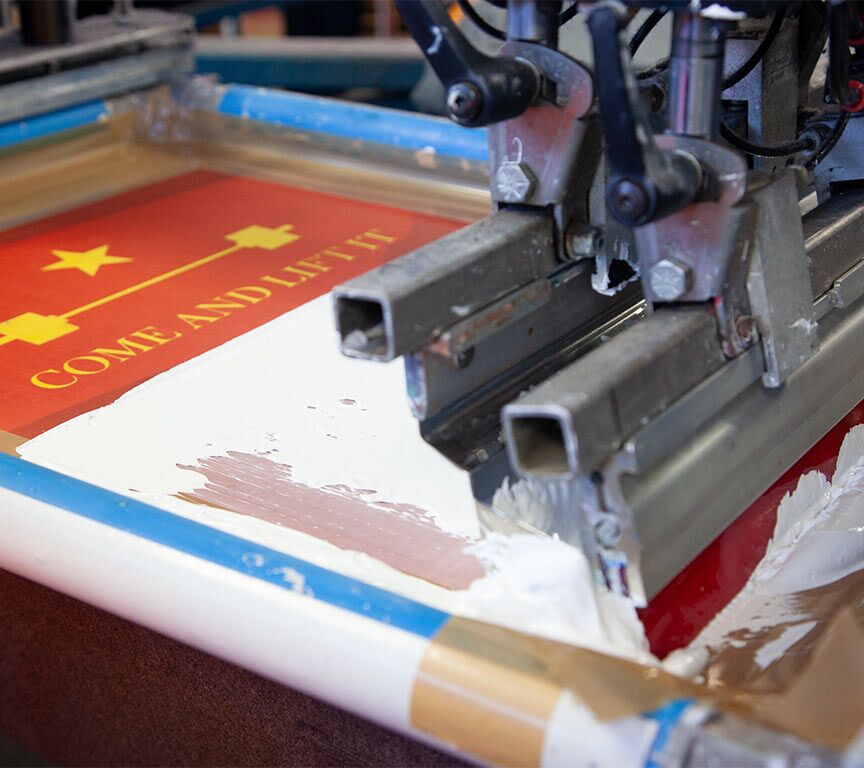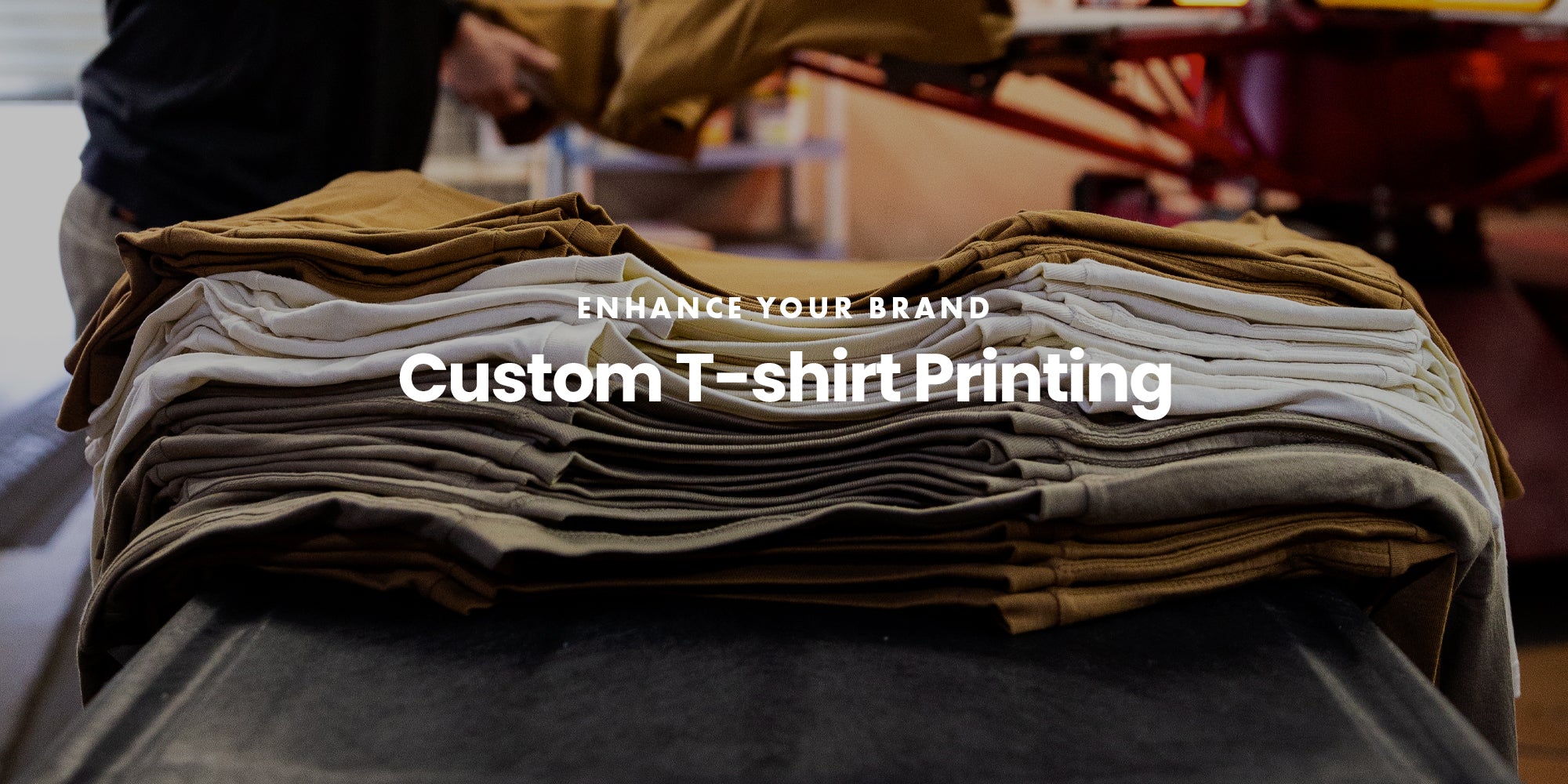Durable T-Shirt Printing for Everyday Wear
Durable T-Shirt Printing for Everyday Wear
Blog Article
Screen Printing Uncovered: Everything You Need to Know Regarding Tee Shirt and Garment Printing Strategies
Display printing is a fascinating method that integrates art with method, providing endless opportunities for creative thinking. Ready to explore the important components that make display publishing an art type?
The Fundamentals of Screen Printing: How It Functions
When you dive into screen printing, you'll uncover it's both a science and an art. At its core, screen printing entails developing a pattern, or display, that permits ink to travel through only in particular areas (screen printing kit). You start by picking your design and preparing your screen with a light-sensitive emulsion. As soon as you subject this emulsion to light, it solidifies, leaving your style as an adverse space.
Position the display over the material, then make use of a squeegee to push ink with the screen onto the garment. Each step is essential, and grasping them will certainly elevate your screen printing abilities, changing simple garments into unique, expressive items.
Sorts Of Screen Printing Strategies
When you comprehend the basics of screen printing, it's time to explore the different techniques that can raise your styles. One preferred approach is conventional display printing, where ink is pushed with a stenciled display. This method is fantastic for bold, dynamic shades. Then there's water-based ink printing, which uses a softer feeling and is green, however it requires a different strategy to healing.
An additional choice is plastisol printing, known for its sturdiness and dazzling colors, making it a preferred for several brands. Experiment with halftone printing to create slope results and intricate designs.
Vital Tools for Screen Printing
To achieve stunning lead to screen printing, having the ideal tools is essential. You'll require a durable display printing frame, which holds the mesh that transfers your layout onto the garment. Next, purchase top notch squeegees; these are essential for applying ink equally throughout the screen. You'll additionally require a great direct exposure unit to produce your displays, as well as a washout booth for cleansing them after use. A trusted warmth source, like a conveyor dryer or warmth press, is essential for treating your prints to guarantee long life. Do not fail to remember a proper office, geared up with tables and storage for your materials. Ultimately, safety gear, such as gloves and masks, will keep you risk-free from chemicals and inks. With the right tools, you'll be well on your means to creating professional-quality prints.
Picking the Right Inks and Materials
When picking inks and materials for display printing, you need to consider the sort of ink that functions finest for your project. Assume regarding fabric compatibility to guarantee your layouts look last and terrific lengthy. Additionally, check out environmentally friendly ink options to make your printing process extra sustainable.
Sorts Of Display Inks
Choosing the appropriate screen ink is vital for attaining lively, durable prints that meet your project's demands. There are several kinds of screen inks to take a look at. Specialty inks, such as metallic or glow-in-the-dark, can add one-of-a-kind results to your designs.

Material Compatibility Considerations
Understanding fabric compatibility is important for attaining high-quality display prints, particularly given that different materials react uniquely to various inks. When picking inks, take into consideration the fabric kind-- cotton, polyester, or blends. For cotton, water-based inks function well, supplying softness and breathability. Polyester, on the various other hand, frequently needs plastisol inks for better attachment and dynamic colors. If you're publishing on blends, you might need to utilize a mix of both types. Constantly evaluate your inks on sample fabric to ensure they stick appropriately and preserve color stability. In addition, bear in mind that fabric weight and structure can influence the final outcome, so choosing the ideal ink and product combination is crucial for your project's success.
Eco-Friendly Ink Options
Environmentally friendly inks are ending up being a prominent choice for screen printers that want to reduce their environmental impact while keeping top quality. When selecting inks, consider water-based inks, which are less hazardous and simpler to cleanse up contrasted to standard solvents.
In addition, look for inks made from look at more info sustainable resources, such as soy or vegetable-based alternatives. By choosing the best inks and materials, you'll not just produce sensational styles yet likewise add to an extra lasting printing process. Make the switch, and your prints will mirror your commitment to the setting!
Preparing Your Design for Screen Printing

File Style Demands
To guarantee your design looks vibrant and sharp on fabric, you'll need to pay close interest to submit style needs for display printing. Start with vector documents like AI or EPS, as they can be scaled without losing high quality. If you make use of raster photos, select high-resolution files, such as TIFF or PNG, preferably at 300 DPI. Stay clear of making use of JPEGs, as they can lose clarity when resized. Make sure your style has a transparent background to avoid undesirable white sides on your prints. Finally, maintain shade modes in mind; CMYK is standard for display printing, so convert your RGB creates accordingly. By following these standards, you'll establish your art work up for a successful print.
Color Separation Techniques
Color splitting up is a necessary step in preparing your style for display printing, and understanding it can significantly boost your print high quality. You'll need to break your layout into private colors, as each color calls for a different display throughout printing. This precision not only assures accurate shade representation however also streamlines the printing procedure.
Resolution and Dimension
Achieving the most effective lead to display printing begins with ensuring your style has the right resolution and size. Ideally, your art work ought to go to the very least 300 DPI (dots per inch) for sharp, clear prints. If you utilize lower resolution, your end product might look unprofessional and pixelated.
When it concerns dimension, think about the measurements of your print area. Design your artwork to match the last print size, ideally developing it More Bonuses in the actual dimensions you'll be printing. In this manner, you'll avoid any type of unanticipated scaling concerns.
Always check your style in both vector and raster formats. Vector graphics can be scaled without shedding quality, making them optimal for display printing. Preparing properly will guarantee your style looks impressive on every garment!
Step-by-Step Screen Printing Process
Display printing is a vibrant procedure that permits you to produce vibrant designs on various surfaces. To get begun, you'll need a screen, solution, and your selected ink.
After rinsing the unexposed emulsion, your screen is prepared. Establish it up on your printing surface and straighten your garment beneath it. Put ink onto the display and utilize a squeegee to press the ink via the pattern onto the material. Lift the screen meticulously and allow the print completely dry. Heal the ink using warmth to assure toughness. That's it! You have actually efficiently display printed your design.
Tips for Successful Display Printing Projects
While you're diving right into your display printing tasks, keep in mind that prep work is crucial to success. Begin by collecting all your products-- inks, squeegees, displays, and garments. A clean office aids stop undesirable errors, so clean up before you begin.
Following, confirm your art work is high-resolution and properly sized for your garment. Check your display for proper exposure and tidy it thoroughly to stay clear of spots. When blending your inks, comply with the supplier's guidelines to achieve the ideal uniformity.
During printing, apply even stress with your squeegee for constant outcomes. Don't rush; take your time to confirm each print satisfies your requirements. After printing, allow your garments dry entirely prior to handling or packaging them.
Last but not least, constantly keep a sample of your work for future reference. By doing this, you can evaluate your progression and improve your strategies over time. Delighted printing!

Regularly Asked Concerns
For how long Does It Require To Set up a Display Printing Task?
Setting up a screen printing job typically takes about 30 mins to an hour. You'll prepare the displays, mix inks, and readjust journalism. The moment differs based upon complexity and experience, so stay arranged!
Can I Print on Various Fabric Keys In Making Use Of the Very Same Strategy?
Yes, you can publish on various textile kinds utilizing the same strategy, yet you'll need to adjust your inks and setups. Some textiles absorb ink in different ways, so trying out guarantees the finest outcomes for every material.
What Prevail Mistakes to Stay Clear Of in Display Printing?
When display printing, avoid common errors like making use of the wrong ink, disregarding appropriate exposure times, or skipping pre-press checks. Constantly examine your setup and maintain clean displays to assure high quality great site results each time.
Just How Can I Properly Tidy and Preserve My Display Printing Tools?
To properly clean and preserve your screen printing tools, you need to frequently wash screens with ideal solvents, inspect mops for wear, and guarantee all tools are stored dry and dust-free. Uniformity protects against pricey repair services and improves performance.
Is Screen Printing Eco-friendly Compared to Other Techniques?
Screen printing can be more ecologically friendly than various other techniques, especially if you make use of water-based inks and eco-conscious products. By selecting lasting materials and techniques, you minimize waste and reduce your influence on the planet.
Screen Printing Uncovered: Whatever You Required to Know Regarding T-Shirt and Garment Printing Strategies
At its core, screen printing entails developing a pattern, or display, that permits ink to pass through only in certain locations. Setting the display over the textile, then use a squeegee to push ink via the display onto the garment. One prominent method is standard display printing, where ink is pushed through a stenciled screen.When picking inks and materials for display printing, you need to take into account the kind of ink that functions ideal for your job.
Report this page